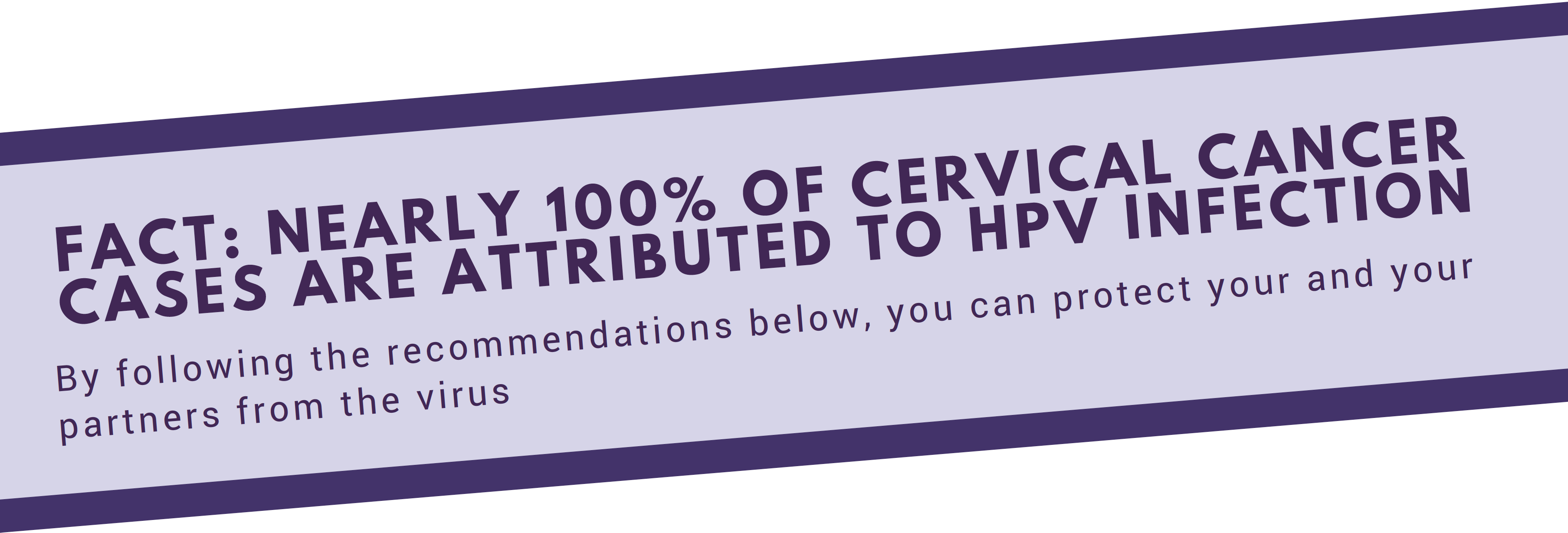HPV in Female BodiesHuman Papillomavirus Virus (HPV) in the female body can lead to genital warts as well as cervical, vaginal, vulvar, anal, and oral cancers.

Protect Yourself
Correct use of protection during vaginal, anal,
and oral intercourse reduces your risk of infection from HPV and other
STI’s. Try flavored condoms for a fun way to have
protected oral sex.
Condoms are available from the Reproductive Health Peer Educators. Contact them on Facebook @RHPEofUWSP for more information
|
2. Get
regular cervical and STI screenings
Starting at age 21, people with female body
parts should get regular cervical screenings (aka. Pap Smears). Pap smears
check for changes in your cervix that could indicate cancer. Sexually active individuals should get tested
regularly for all STIs.
Walk-In STI testing in available at the UWSP
Student Health Service on Thursdays from 11- 1 and gynecological exams can be
scheduled for No Additional Charge to Students!
|
3. Get Vaccinated
The HPV vaccine is recommended up to the age of 26. Gardasil 9 protects against 9 strains of HPV
most commonly associated with cancer and genital warts. Learn more by clicking on the “Get Vaccinated for HPV”
tab.
Even if you have already been sexually active
and may have been exposed to HPV, The Vaccine is still effective in protecting
you against other types of HPV that can lead to genital warts and cancer
|
4. Limit your intake of alcohol and other substances
Consumption may affect your ability to make safe decisions about intercourse.
5. Consider
Abstinence
Abstinence is 100% effective at preventing STIs
including HPV.
